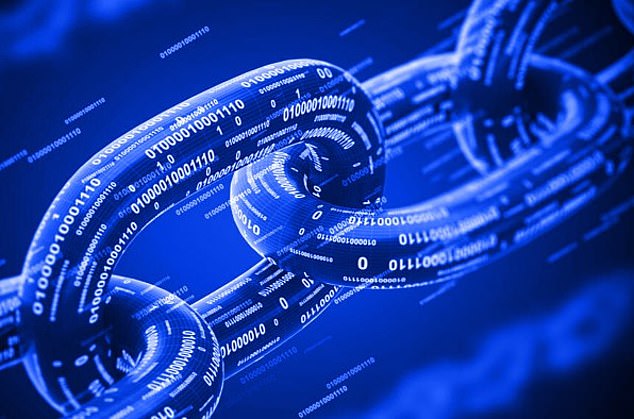Since you ask: What is Blockchain?
>
Since you ask, here we explain baffling stock market terminology – and how to make a profit… this week – Blockchain
<!–
<!–
<!–<!–
<!–
<!–
<!–
What is Blockchain?
A blockchain is an online ledger that stores information that is “distributed” or shared across a network of computers.
There should be many applications for this technology that provides decentralized and secure recording of transactions. In theory, the potential should be limitless, and billions of venture capital have been invested in this bright future.

Digital Links: A blockchain is an online ledger that stores information that is “distributed” or shared across a network of computers
But currently, blockchain is best known for its key role in the systems for buying, selling and storing cryptocurrencies such as bitcoin.
Blockchain is also used in the systems for NFTs. These are non-fungible tokens or digital works of art.
The most famous of these is The Merge, by an anonymous artist named Pak, which sold for $91.8 million a year ago.
What other uses can blockchain be used for?
Much attention has been paid to its ability to disrupt traditional payment systems for stocks and other financial assets.
The world’s major banks are striving to replace blockchain with, for example, their current expensive and cumbersome international payment systems.
One of blockchain’s main attractions is its status as a “trustless” network, so-called not because its participants don’t trust each other, but because they don’t have to, as the blocks are “immutable” or tamper-resistant.
To date – presumably due to the lack of other options – people seeking to harness the potential of blockchain have supported cryptocurrencies.
Some have made fortunes: Bitcoin’s price hit $68,000 in November 2021. But now it is $16,582, largely due to the recent collapse of the FTX crypto exchange.
How does blockchain actually work?
Usually, the data in a database is structured in tables. But in a blockchain, the data is structured in blocks strung together in a chain.
When a block containing details about a transaction is added to this chain, it is given an exact timestamp.
As a result, the information is permanently recorded – and should be visible to all, as the ledger is decentralized.
Did one person invent blockchain?
Not exactly. Two American scientists – Stuart Haber and W. Scott Stornetta – came up with the idea in 1991. Later on, they teamed up with Satoshi Nakamoto.
This is the pseudonym of the person (or people) who allegedly developed bitcoin and put together the first blockchain database. Attempts to discover the true identity of the person or team involved have so far proved unsuccessful. However, Haber and Stornetta are definitely real people.
Why are we hearing so much about blockchain now?
The collapse of FTX, once a $32 billion company, has severely damaged confidence in bitcoin and other cryptocurrencies.
It has also shaken confidence in blockchain, although the failure of the FTX seems to have been largely caused by large-scale fraud.
So the prospects for blockchain are bleak?
Not really. Governments around the world are considering launching their own cryptocurrencies, while Venezuela has already done so.
The Bank of England is exploring whether it should launch a central bank digital currency based on blockchain technology.
This could be part of the post-Brexit reforms for the city, unveiled by the chancellor late last year. This currency would be used to pay for things online or transfer money to other people.
